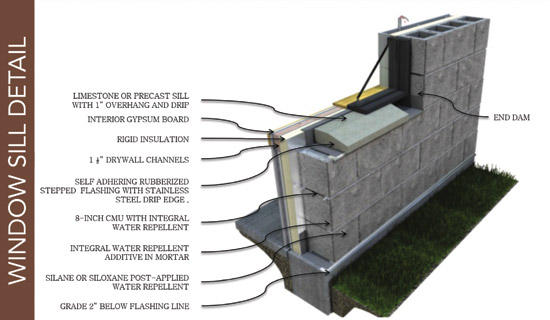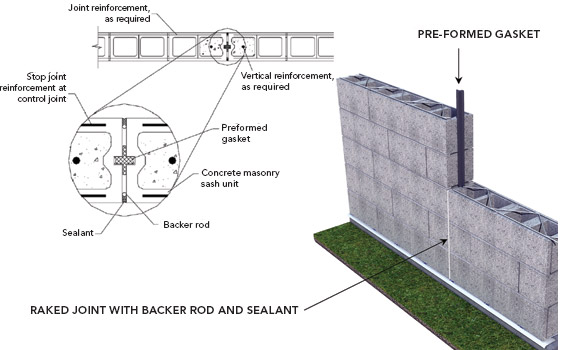Quality Masonry
 |
|
Photo courtesy of Illinois Indiana Masonry Council (IIMC) |
Mortar and Mortar Joint Considerations
Also important in producing dry walls are the type of mortar and mortar joint. The lowest strength mortar required for durability and watertightness should be selected as this mortar is typically more workable and able to produce a weather-resistant seal at the unit interface. For best results, mortar joints should be tooled to a concave profile. This improves resistance to water penetration as it steers water away from the surface of the wall. The shape of the tool also compacts the mortar against the CMU to more effectively seal the joint. Because they don't compact the mortar, other types of joints including raked, flush, struck, beaded, or extruded, will create ledges that interrupt water that streams down the face of the wall and are not recommended in exposed exterior walls. It is also important for water resistance that head and bed joints extend the full width of the face shells.
In summary, single wythe walls offer an attractive cost savings compared to cavity construction. Moisture protection, collection, drainage, and back-up are important in achieving “rainscreen” performance in single wythe masonry, and a combination of integral water repellents and sealers offer a “belt and suspenders” line of defense. For best results, flashing and weeps are required at horizontal breaks.
Crack Control
To accommodate movement, expansion joints are used with clay brick, and control joints are used in concrete masonry construction. Control joints are one way of relieving horizontal tensile stresses due to shrinkage of CMUs, mortar, or grout. In addition to relieving horizontal tensile stresses, control joints reduce restraint, permit longitudinal movement, and separate dissimilar materials. Control joints, which are essentially vertical planes of weakness built into the wall to reduce restraint and allow longitudinal movement due to anticipated shrinkage, should be located where stress concentrations may occur. While these locations can be difficult to pinpoint in practice, following are some rules of thumb in locating the control joints. According to the National Concrete Masonry Association, these are:
- at changes in wall height
- at changes in wall thickness, such as at pipe and duct
- chases and pilasters
- at (above) movement joints in foundations and floors
- at (above and below) movement joints in roofs and floors that bear on a wall
- near one or both sides of door and window openings
- adjacent to corners of walls or intersections within a distance equal to half the control joint spacing.
Types of control joints are shown in the illustration below.
 |
|
Images courtesy of the Trenwyth team |









